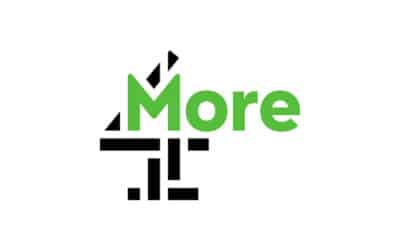All agency owners will know how hard it is to keep growing and attracting new clients in the current climate with budgets tightening, talent shortages and the pace of work increasing.
Here, Jake Spence, managing director of North East global revenue acceleration agency durhamlane, explains how agencies can stand out from the competition and build long-term relationships by balancing innovation with getting the basics right.
Building a long-term and sustainable agency-client partnership begins before you’ve even won the contract. It starts through pre-qualification of the opportunity and the client challenge. Start by ensuring you understand the brief properly and set realistic expectations about what can be achieved when putting your response together.
In my view, it’s the agency’s responsibility to educate prospective clients about the reality of your expertise and service offering. Comprehensive and thorough onboarding is critical to aligning expectations and must support the pre-sales journey.
Once your client is on board, focus your attention on building strong, long-term client relationships and nurturing them to foster loyalty, which in turn leads to client advocacy and referrals.
The strategic business targets of your clients should become your targets
Do this by ensuring your client’s objectives become your objectives. It’s easy to focus on outputs as a measure of success, but the reality is that understanding their strategic business targets will allow you to tailor your services and offerings to meet their specific needs. By doing so, you position yourself as a trusted partner rather than just another service provider.
Start by engaging in open and honest conversations with your clients to gain a deep understanding of their goals. What are their key performance indicators (KPIs)? What are their pain points and challenges? By actively listening and empathising, you can identify how your agency can add value and contribute to their success.
Only when you have truly aligned goals do you build a sustainable partnership. Agencies often claim that if a lead isn’t converting, then that’s the client’s problem. But actually, it should be the agency’s problem. Shared accountability is critical, as is visibility from both parties of revenue generated from leads.
Contractual obligations are not how to measure success
While fulfilling your pitch promises and contractual obligations is obviously important, the crucial secret to success is to go beyond the minimum and exceed client expectations. Consider what they really expect in terms of client servicing – you cannot delight clients unless all of the basics are in place.
It’s easy to think that a client’s expectation is ‘X number of appointments booked per month’, and to then measure your success through this simple measure. But in reality, their baseline of expectation is much greater than this; they expect the target to be hit every month, they expect zero staff attrition, they expect every opportunity to be of a consistent standard, they expect all reports to be delivered on time and they expect all catch up meetings on time. The list goes on! If at any point any one of these isn’t happening, you cannot delight.
By getting the basics right consistently, you differentiate your agency from competitors and build a reputation for excellence.
When it comes to undertaking a quarterly agency/client review, the unofficial narrative is often ‘please like us for the work we’ve done’. But it should be more forward-looking and strategic. Don’t fall into the trap of congratulating yourself for what you’ve already achieved and trying to recreate that success at every milestone. While it’s important to learn from experience, it’s equally crucial to look to the future and anticipate the different challenges and new opportunities that lie ahead.
Similarly, consider and ask, what is your client struggling with? What changes are occurring in their business? To find this out means sharing changes and challenges within your own business. Only then can you fully understand their strategy and support them with that.
The risks of not taking this approach are missed opportunities and being single-threaded in the way you work with them. You will end up delivering a project, instead of being a partner – who can help a client more strategically longer term.
Diversify your service offering by exploring new target markets
It’s essential to constantly evolve your service offering and remain forward-thinking in the current climate. This allows you to tap into additional revenue streams and mitigate risks associated with relying on a single service or market.
Start by conducting a thorough analysis of your current services. Are there any complementary services you can add to provide a more comprehensive solution to your clients? Consider the needs and pain points of your existing customer base and identify areas where you can expand your offerings.
In addition, consider exploring new target markets as a method to help you diversify. Conduct market research to identify industries or sectors that align with your expertise and capabilities. By expanding your reach, you can tap into new customer segments and unlock new growth opportunities.
When entering new markets, don’t skip investing in market research, competitive analysis, and customer insights. Tailor your marketing and messaging to resonate with the specific needs and preferences of the target market. Build relationships and partnerships with local organisations to establish credibility and gain a foothold in the new market.
Then, use these connections and the knowledge that comes with them to inform how you optimise your pricing structures to remain competitive without compromising profitability. It’s so easy to end up becoming a slave to the economy – always stay ahead and keep innovating in order to stay on top of your industry and avoid slipping into rote tasks and tunnel-vision offerings.
Finally, consider if your skills are transferable. If you specialise in B2B, can you use those skills for B2C markets? For example, if the core requirement is driving revenue for a brand, the skills that are needed for this are very transferable and might uncover an entirely new revenue stream.
By aligning your targets with those of your clients, exceeding contractual obligations, embracing innovation, and diversifying your service offering, you can navigate the challenges ahead and position your agency for long-term success.
This requires agility, foresight, and a relentless focus on delivering exceptional value to your clients.










